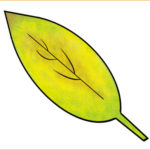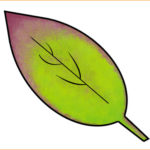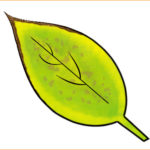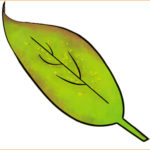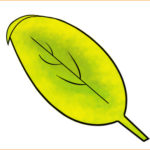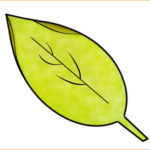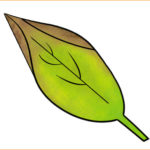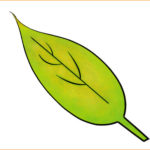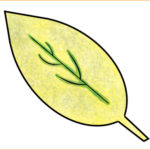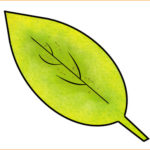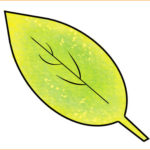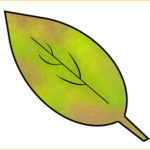Symptoms of Nutrient Deficiency and Excess
Edited by Dr. Ryan Lee, PhD
An understanding of basic plant nutrition is recommended for those with a serious interest in gardening. The purpose of this feature is to explain the function of the essential nutrients in plants and to provide information about recognizable symptoms in plant material when there is a nutrient deficiency or excess. Following diagnosis it may be possible to improve plant health and vitality by adjusting nutrient levels.
NUTRIENTS MUST BE “PLANT AVAILABLE”
All of the nutrients listed here are essential – plants cannot live without even the least of these. It is not enough that the nutrients are present – they also must be “plant available”. Availability depends largely on soil texture, organic matter, and pH. Therefore it is highly recommended that gardeners start their nutritional program with a high-quality soil test from a reputable testing facility. While Osmocote® Plant Food, the sponsor of this website, provides several essential nutrients and / or brings the concentration of certain nutrients to levels that are available to the plant, its ability to do so is dependent on the soil’s characteristics.
WHERE DEFICIENT/EXCESS NUTRITION FIRST APPEARS IN A PLANT MATTERS
A key concept in understanding plant nutrition is “mobility”. For example, Nitrogen is a very mobile nutrient. When the soil is lacking sufficiently available Nitrogen, a plant will rob available Nitrogen from its old leaf material and move it into actively growing points (from source to sink). Therefore, the deficiency develops on the old leaves first. They turn yellow between the veins as the Nitrogen is wicked out of the cells towards the needy, new growth. Calcium on the other hand, is immobile. Therefore, if a plant finds itself in an environment that has low available Calcium, the symptoms will most likely manifest in the newest growth, as the plant is unable to shunt this nutrient easily. Plants deficient in Calcium will display irregular growth in the newest leaves.
UNDERSTANDING BASIC PLANT PHYSIOLOGY IS KEY IN DIAGNOSIS
From the two examples above concerning Nitrogen and Calcium it is easy to see that diagnosing nutrient deficiency (or excess) requires not only characterizing the symptom but also understanding some basic plant nutrition physiology. If symptoms develop on the old growth, the nutrient is mobile. If symptoms develop on new growth, you are likely dealing with an immobile nutrient. Armed with this knowledge and a good soil test, any gardener should be able to diagnose nutrient related diseases.
DIFFERENCE BETWEEN PLANT ESSENTIALS AND “BENEFICIALS”
Before turning to the review of specific nutrients, there is another category of materials that gardeners give to their plants. Let’s call them “beneficials”, that is, things that might improve plant growth but are not required (things like giving sugar water to a pumpkin). As interesting and helpful as such things may be, they are not essential to plant life and are not reviewed in this article.
Primary Nutrients
Nitrogen
Nitrogen is one of the most crucial nutrients to plant growth. It is also the most heavily utilized nutrient by plants and thus tends to be the most limiting nutrient. The addition of nitrogen tends to produce the most significant result of any nutrient. That can sometimes result in over-application. Excess nitrogen can negatively affect plants. In grasses like corn, wheat, rye, etc. excess nitrogen can lead to lodging (which means roots and stems falling over). In tomatoes, cucumbers, melons and squash, excess nitrogen will drive excessive vine growth at the expense of fruiting. What constitutes the correct amount of nitrogen depends on the plant so be sure to do your research when applying to a new type of plant.
SYMPTOMS OF NITROGEN DEFICIENCY
Appearance of leaves:
Uniformly yellow-green
- Undersized
- Thin
- Early drop in fall
- Increase in occurrences of disease
Shoots may be:
- Short and small in diameter
- Overly reddish or reddish brown (in some plants)
Flowers and Fruits may show:
- Delayed bloom, early maturity
- Undersized blossoms or fruit
SYMPTOMS OF NITROGEN EXCESS
- Absence of fruits / flowers
- Abundance of leaves with weak stems.
- Higher susceptibility to diseases and pests
Phosphorous
Phosphorus is necessary for seed germination and root development. Deficiencies most likely occur in where the soil has little organic material. Phosphorus is less available in cooler soil temperatures therefore the deficiency may manifest during a cold spring and disappear when the soil warms. Symptoms of Phosphorus deficiency may be difficult to diagnose because other factors may yield similar symptoms. Phosphorus is mobile so old leaves turn purple first.
SYMPTOMS OF PHOSPHOROUS DEFICIENCY
- Red or purple leaves
- Purplish lower stems
- Poor root development
- Loss or absence of lower leaves
- Stunting and delayed maturity
- Reduced flowering
SYMPTOMS OF PHOSPHOROUS EXCESS
- Suppression of micronutrients
- Interference with Nitrogen update (see nitrogen deficiency symptoms)
Potassium/Potash
Potassium is absorbed in larger quantities than any nutrient other than Nitrogen. It supports photosynthesis. It also increases drought tolerance by reducing water loss in leaves. Potassium deficiencies can occur in new gardens and/or sandy soils low in organic matter. The classic Potassium deficiency symptom is “burnt edges”. Leaf margins look like they have been scorched. Potassium is mobile so the symptom shows up on the old leaves first.
SYMPTOMS OF POTASSIUM DEFICIENCY
- Chlorosis (yellowing) between leaf veins
- Brown spots or yellowing edges on leaves
- Scorching and curling of leaf tips
- Reduced plant growth and root development
- Small, poorly colored fruit
SYMPTOMS OF POTASSIUM EXCESS
- Suppression of overall nutrient update
- Elevated salt levels
Secondary Nutrients
Calcium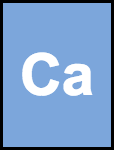
Calcium is an essential ingredient in cellular structure. It is important in both leaf and root development. Calcium does not migrate easily from older to younger tissue so look for symptoms at the growing points. Leaves may be distorted and brown with curled tips. Malformation is the classic Calcium symptom.
SYMPTOMS OF CALCIUM DEFICIENCY
- Brown leaves or bleaching of leaves
- Deformed growth (twisting or bending)
- Reduced plant height
- Poorly developed roots
- Poor fruit development
- Cracking in tomatoes; brown heart in leafy vegetables
SYMPTOMS OF CALCIUM EXCESS
- Calcium or Potassium deficiency
Magnesium
Magnesium is essential for photosynthesis and is an important part of chlorophyll. It also participates in many enzyme activities. Magnesium is often deficient within sandy soils as may be found in coastal areas due to low levels of organic material. It may also occur where high levels of N and K have been applied. Magnesium deficiency is commonly associated with yellowing leaves. It is most often visible during wet and cold periods. Over-watering a plant can look like Magnesium deficiency.
SYMPTOMS OF MAGNESIUM DEFICIENCY
- Yellowing leaves
- Curling leaves (downward or upward)
- Premature shedding of leaves
- Early dropping of Immature fruit
- In conifers, orange-colored needles
SYMPTOMS OF MAGNESIUM EXCESS
- Deficiencies in Magnesium and Potassium
-
Limited or no seed germination
Sulfur
Sulfur plays a variety of roles in plant life but is generally associated with chlorophyll formation. It also enhances root growth, seed production and the plant’s ability to withstand cold. Sulfur deficiency is most visible in leaves. Plant available Sulfur comes from microbial activity breaking down organic material and from acid rain. As control of pollution improves, horticulturalists are beginning to see Sulfur deficiencies in production fields. A word of caution, soil Sulfur is an acid. Addition of this nutrient will likely decrease soil pH.
SYMPTOMS OF SULFUR DEFICIENCY
- Yellowing of young leaves; then the entire plant
- Slow growing, rounded leaves that roll upwards
- Stiff and brittle leaves
- Dropping leaves & dead bud tips
- Small, hard and woody roots
SYMPTOMS OF SULFUR EXCESS
- Premature shedding of leaves
Micronutrients
Boron
Boron helps with the development of cell walls and in the production of fruits and vegetables. Boron is essential but in very small quantities. The line between deficiency and excess is narrow. Boron is extremely mobile in soil. As a result, deficiency often occurs in areas of high rainfall.
SYMPTOMS OF BORON DEFICIENCY
- Stunted and distorted growth
- Scorched and curled leaves
- Smallish, brittle leaves
- Discoloration and underdevelopment in vegetable plants
- Reduced flowering
SYMPTOMS OF BORON EXCESS
- Scorched leaf edges & early leaf dropping
Copper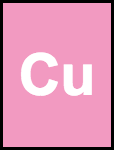
Copper functions as a catalyst in plant photosynthesis and respiration. It affects the formation of lignin in cell walls and contributes to the structural strength of the plant. Copper also affects the flavor and sugar content of fruit.
SYMPTOMS OF COPPER DEFICIENCY
- New growth is stunted, misshapen or wilted
- Inter-vein chlorosis in young leaves
- Vegetable leaves become a bluish-green color and curl
- Prone to disease
SYMPTOMS OF COPPER EXCESS
- Excess copper rarely occurs naturally
Iron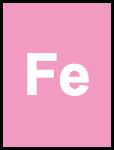
Iron enables other nutrients (elements) to travel through the plant’s circulatory system. Without Iron, a plant cannot produce chlorophyll, cannot get oxygen and will not be green. Iron deficiency produces yellow leaves but that is a not enough for a diagnosis because yellow leaves are a common result when many nutrients are deficient.
SYMPTOMS OF IRON DEFICIENCY
- Yellowing of leaves while veins remain green
- Stunted development of plant’s new growth and its youngest leaves
- Poor fruit production
SYMPTOMS OF IRON EXCESS
- Deficiency of other nutrients and plant death
Manganese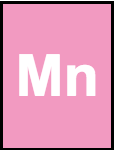
Manganese contributes to photosynthesis, accelerates germination and pollination, increases the availability of Phosphorus and Calcium, and supports the movement of Iron. Manganese deficiency symptoms are similar to those of Iron deficiency or toxicity.
SYMPTOMS OF MANGANESE DEFICIENCY
- Yellowing of leaves
- Reduced or stunted plant growth
- Reduced level of germination
- Poor number of blooms and size of blooms
SYMPTOMS OF MANGANESE EXCESS
- Brown spotting on leaves
Molybdenum
Molybdenum absorption is very sensitive to soil pH. Absorption increases with increases in pH. Legumes, cabbage and cauliflower require relatively high levels of the nutrient. Molybdenum affects pollen and fruit formation.
SYMPTOMS OF MOLYBDENUM DEFICIENCY
- Reduced growth
- Pale and withered leaves
- Poorly developed product (beans, cabbage, etc.)
- See Nitrogen deficiency for more symptoms
SYMPTOMS OF MOLYBDENUM EXCESS
- No harm from excess molybdenum
Zinc
Zinc performs many functions. It is necessary for proper root development, influences the rate of stalk and seed maturity and enables the plant to survive lower air temperatures. Zinc deficiency is the most widespread micronutrient deficiency problem.
SYMPTOMS OF ZINC DEFICIENCY
- General stunting of plant; discoloration of leaves
- Chlorosis in lower leaves (Plants especially sensitive to insufficient levels of Zinc: beans, sweet corn, citrus, and pecans
SYMPTOMS OF ZINC EXCESS
- Potentially restricts uptake of other nutrients













